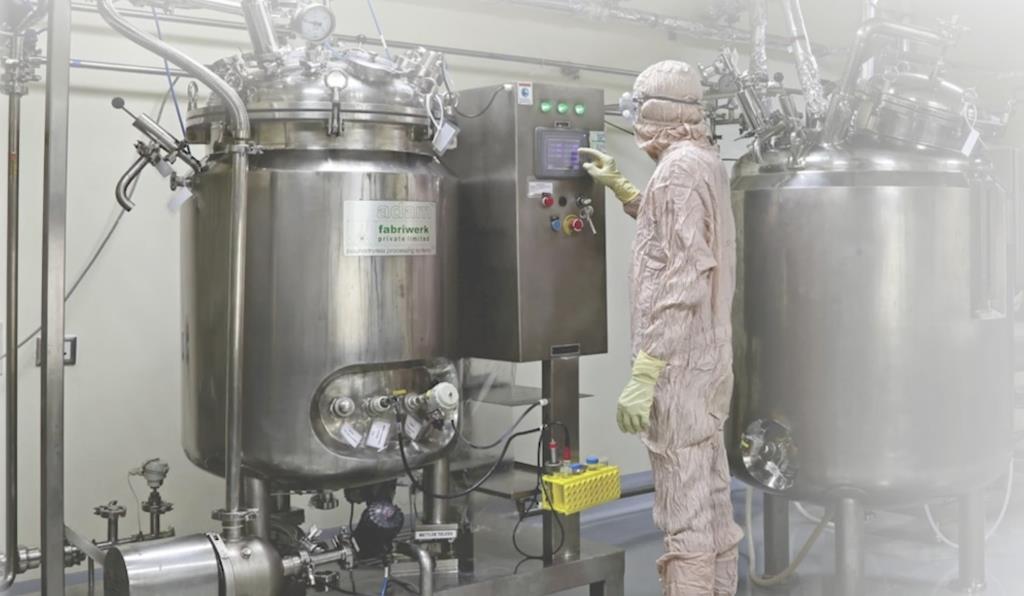
Biosimilars are defined as the follow-on versions of original biological medicines. These are separately developed after the patent protecting the original product has expired. Biosimilars are intended to have the same MOA as original biological drugs and are designed to treat the same diseases as the innovator's product. They have many similarities, but are not identical to, the reference biopharmaceutical product.
Razumab injection is a recombinant humanized IgG1 kappa isotype monoclonal antibody fragment designed for intraocular use. Ranibizumab binds to and inhibits the biologic activity of human vascular endothelial growth factor A (VEGF-A). It binds with high affinity to VEGF-A isoforms. The binding of razumab to VEGF-A prevents the interaction of VEGF-A with its receptors VEGFR-1 and VEGFR-2 on the surface of endothelial cells and thus inhibit the endothelial cell proliferation, neovascularisation and vascular leakage. Razumab has a molecular weight of approximately 48 kilodaltons and is produced by an E. coli expression system in a nutrient medium containing the antibiotic tetracycline.
Razumab binds to the receptor binding site of active forms of VEGF-A, including the biologically active, cleaved form of this molecule, VEGF110. VEGF-A has been shown to cause neovascularization and leakage in models of ocular angiogenesis and vascular occlusion and is thought to contribute to the progression of neovascular AMD and macular edema following RVO. The binding of ranibizumab to VEGF-A prevents the interaction of VEGF-A with its receptors (VEGFR1 and VEGFR2) on the surface of endothelial cells, reducing endothelial cell proliferation, vascular leakage, and new blood vessel formation.
Razumab must be administered by a qualified ophthalmologist experienced as intravitreal injections. Razumab should be inspected visually for particulate matter and discoloration prior to administration. Antimicrobial drops should be administered as per the investigator’s discretion or institutional policy to prevent endophthalmitis. The injection procedure should be carried out under aseptic conditions, which includes the use of surgical hand disinfection, sterile gloves, a sterile drape and a sterile eyelid speculum (or equivalent) and the availability of sterile paracentesis (if required). The patient’s medical history for hypersensitivity reactions should be carefully evaluated prior to performing the intravitreal procedure.
The periocular skin, eyelid and ocular surface should be disinfected with 5% povidone iodine and adequate anesthesia and a broad-spectrum topical microbicide should be administered prior to the injection according to the investigator’s discretion. Use of povidone-iodine 5% solution as disinfectant reduces risk of endophthalmitis.
Razumab should be refrigerated between 2 °C to 8 °C (36–46 °F) in the carton to protect from light. The preparation should not be allowed to freeze. Keep out of reach and sight of children.
Reference: Prescribing information of Razumab click here to download
Corporate House, Near Sola Bridge, S.G. Highway, Thaltej, Ahmedabad-380054, Gujarat, INDIA.
MEDICAL DISCLAIMER
All content found on the razumab.co.in website, including: text, images, audio, or other formats were created for informational purposes only. Offerings for continuing education credits are clearly identified and the appropriate target audience is identified. The content is not intended or meant to be a substitute for professional medical advice, diagnosis, or treatment. Always seek the advice of your physician or other qualified health provider with any questions you may have regarding a medical condition. Never disregard professional medical advice or delay in seeking it because of something you have read on this Website. If you think you may have a medical emergency, call your doctor, go to the emergency department, or call 102 immediately. razumab.co.in does not recommend or endorse any specific tests, physicians, products, procedures, opinions, or other information that may be mentioned on razumab.co.in. Reliance on any information provided by razumab.co.in, employees, contracted writers, or medical professionals presenting content for publication to razumab.co.in is solely at your own risk. The site may contain health- or medical-related materials or discussions regarding Eye diseases. If you find these materials offensive, you may not want to use our Site. The Site and its Content are provided on an "as is" basis. Links to educational content not created by razumab.co.in are taken or accessed at your own risk. razumab.co.in is not responsible for the claims of external websites and education companies.
Disclaimer: User data will be collected for better functionality and user response and data included in the chatbot will be kept confidential and will not be shared elsewhere.
